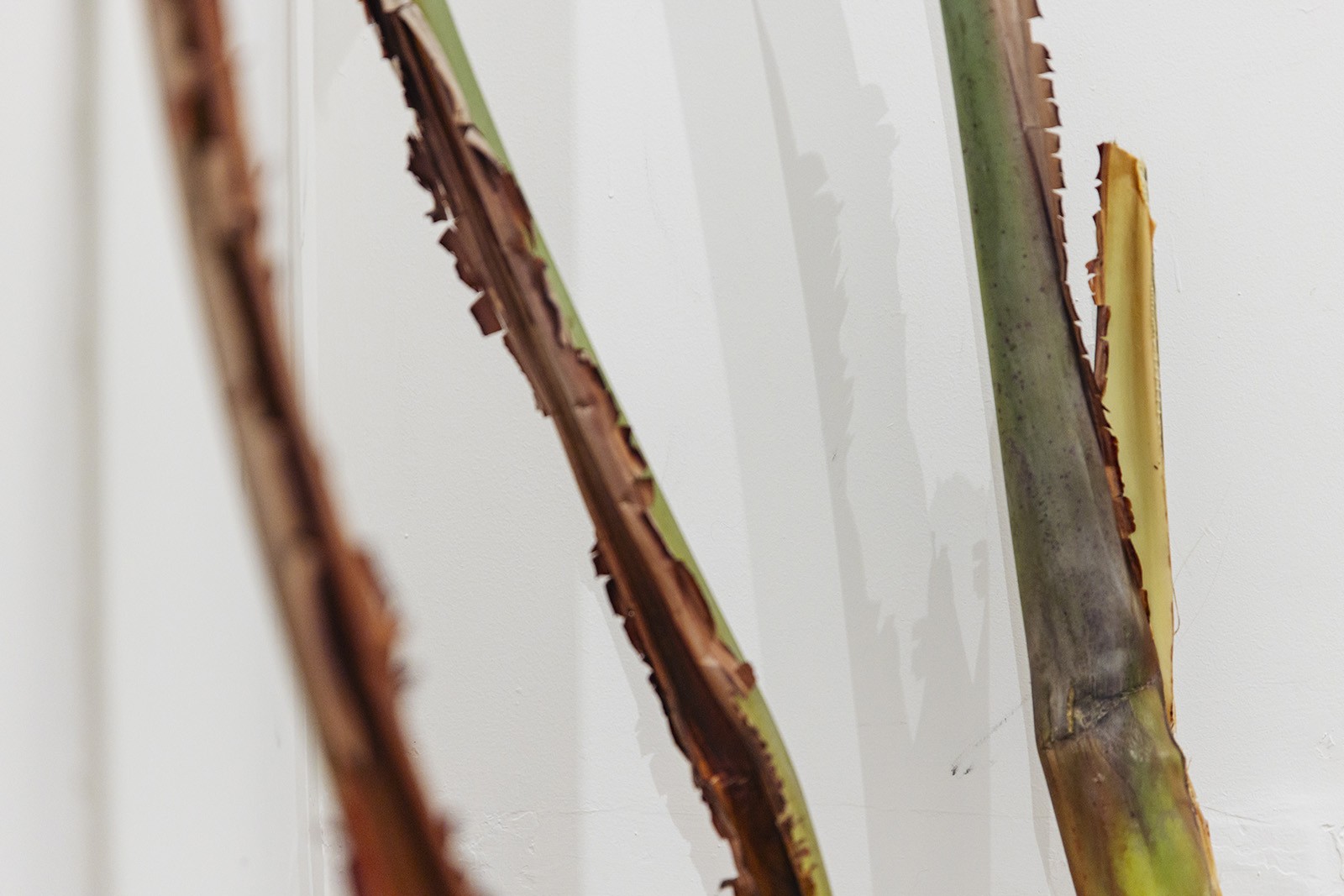Between Two Worlds
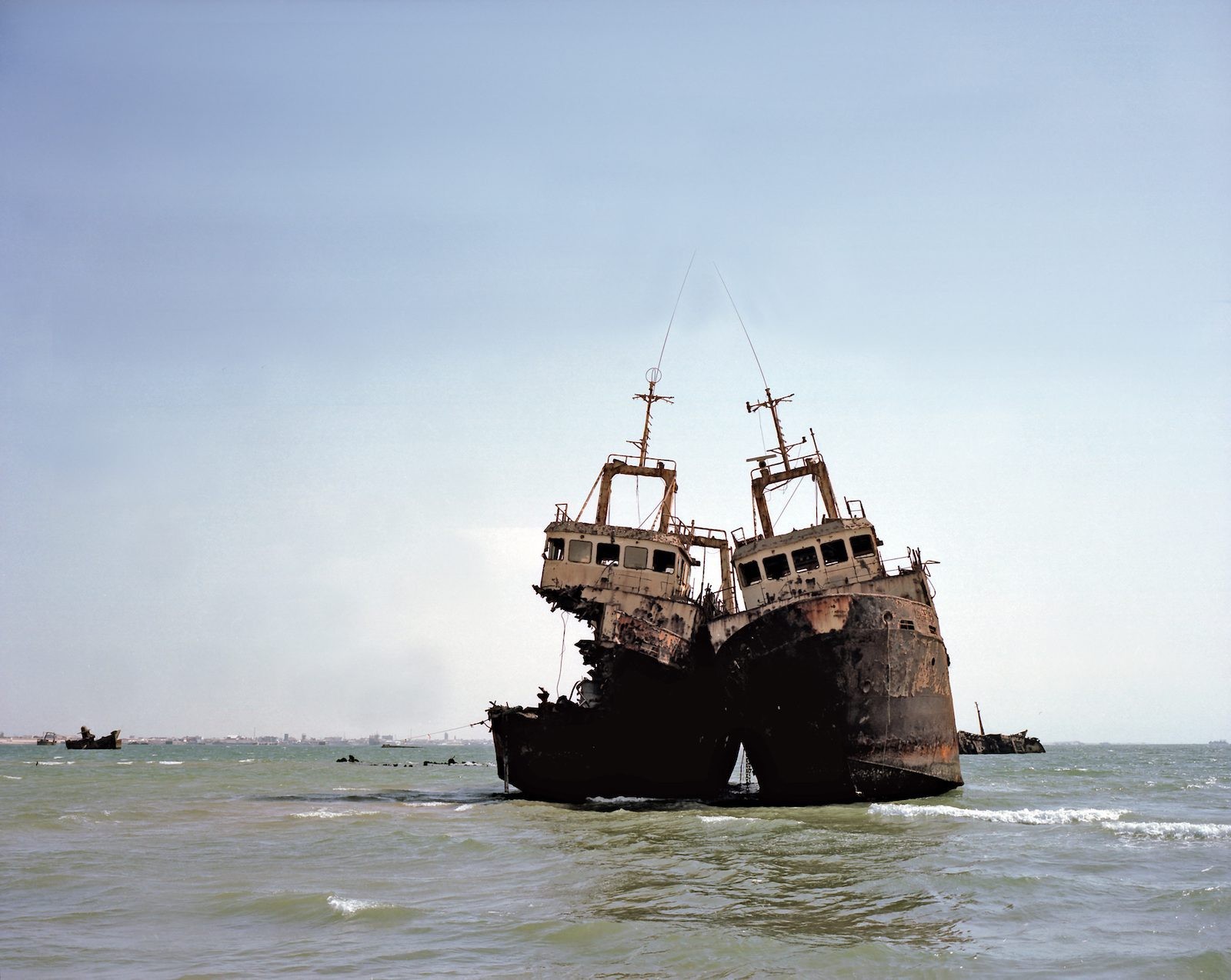
17 April 2020
Magazine C& Magazine
Words Coline Milliard
14 min read
Mobility in the arts, geographical or otherwise, is often seen as almost a requirement. However, COVID-19 has put to the test this very idea and aspiration. In the series "States of Mobility" we have selected texts that probe assumptions of movement in relation to people on the African continent and beyond. In this interview we look on the poetic, politically charged images and videos of Zineb Sedira, with which she confronts the recent history of North Africa.
Zineb Sedira is perhaps the contemporary artist most closely associated with Algeria. In the last two decades, she has become a prominent champion of the North African country of her parents’ birth—both in her work and as a host. In 2011, she turned a flat in Algiers into a base for aria, an international artist residency program. Sedira’s multiple identities, as a French Algerian woman and mother based in London, served as the springboard for a practice that initially focused on video and photography. From this deeply personal perspective, she has addressed topics ranging from her relationship to cultural signifiers such as the veil (SilentSight, 2000), to intergenerational communication in a Diaspora context (MotherTongue, 2002), and her family’s traumatic experience of the Independence War (RetellingHistories, mamothertoldme, 2003).
But Sedira isn’t one to limit or repeat herself. Over the years, she has widened the paths she set out to explore, both geographically and thematically. Autobiography gave way to a poetic but politically charged investigation of global fluxes—of people, of goods—in which the sea plays a central role. Sedira also turned her lens to those whom history and the media have left behind. In her video Gardiennesd’images (2010), there’s Safia, the widow of Mohamed Kouaci—the only Algerian photographer known to have documented the Independence process—who is now left with the daunting task of looking after a sprawling photographic archive. In FloatingCoffins (2009), there are those men and women who live in and around the shipwrecks and abandoned containers in Nouadhibou, Mauritania, many hoping for passage to Europe.
Sedira’s formal vocabulary has also grown in ambition and scope. Her videos have split and multiplied in immersive installations; photographs have taken a sculptural turn with freestanding light boxes; objects have cropped up. In the midst of an intense production period ahead of solo shows at the Sharjah Art Foundation in 2018 and the Jeu de Paume in Paris in 2019, I sat down with Sedira in her Brixton studio to discuss her trajectory and the projects ahead.
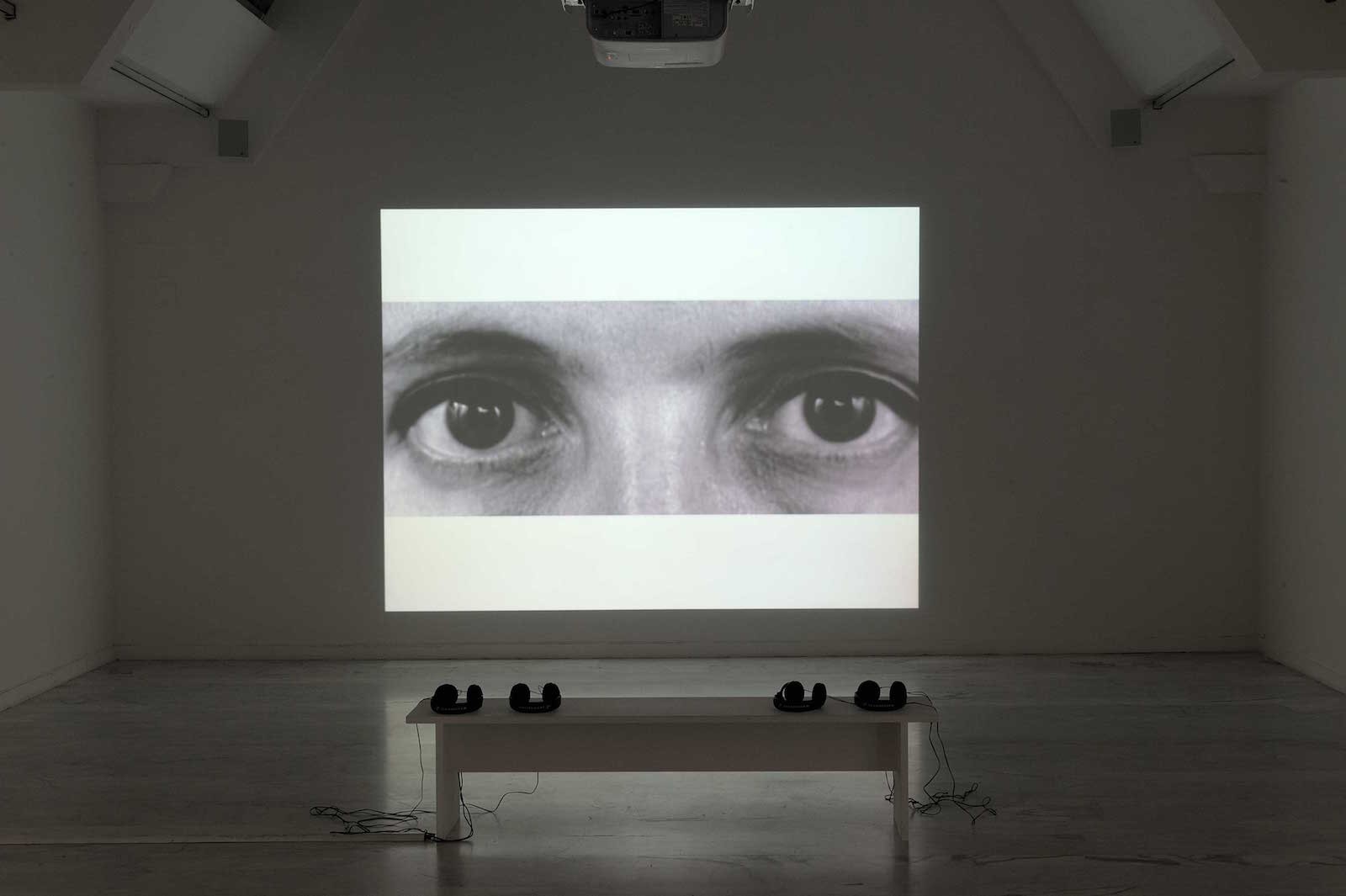
Zineb Sedira, Silent Sight, 2000. Video projection, 11 minutes, 10 seconds, black and white, sound © the artist/DACS, London and courtesy kamel mennour, Paris/London
Coline Milliard: Let’s start with your upcoming exhibition at the Sharjah Art Foundation, which will open in March 2018. One of the new pieces focuses on the route of the first Indian service by Imperial Airways (now British Airways), which linked London to Karachi via Sharjah, U.A.E. How did this project come about?
Zineb Sedira: Much of my work deals with the idea of mobility—whether by plane, train, or boat. While doing preliminary research in Sharjah, I came across the Al Mahatta Museum, which was the U.A.E.’s first airport, originally built in 1932. At the time, the planes travelling to Sharjah from London came from Croydon Airport, which, after closing in 1959, also became a museum. This was the perfect project because it meant that I would be doing research in the archives in Sharjah and at the Croydon Airport Society. Looking at the journey, there have been many changes in terms of stopovers and in terms of airports. Some don’t exist anymore or their names have changed. And some countries shifted: Palestine has become Israel; Karachi, India, is now in Pakistan. In the 1930s, Britain was so powerful that it could decide where to set up airports in other countries. Travel was easy because of the deals Britain had with local authorities within the Empire.
Milliard: Besides your archival research, you’re also going to travel the route physically. Why was it important to put yourself in the shoes of these former passengers?
Sedira: In 1932, most of the passengers were wealthy, mostly male, Westerners. I will take that journey as a woman of Arab background. I will try to keep the same path because I want to highlight the difficulty of recreating that route eighty-five years later, and the new geo-political map. Now each country has its own airline. Visas are slowing the process down and there are places where I might not be able to go at all. In each location, I will dress in the style of the 1930s to add a jarring time-lapse to the images that will come out of the project.
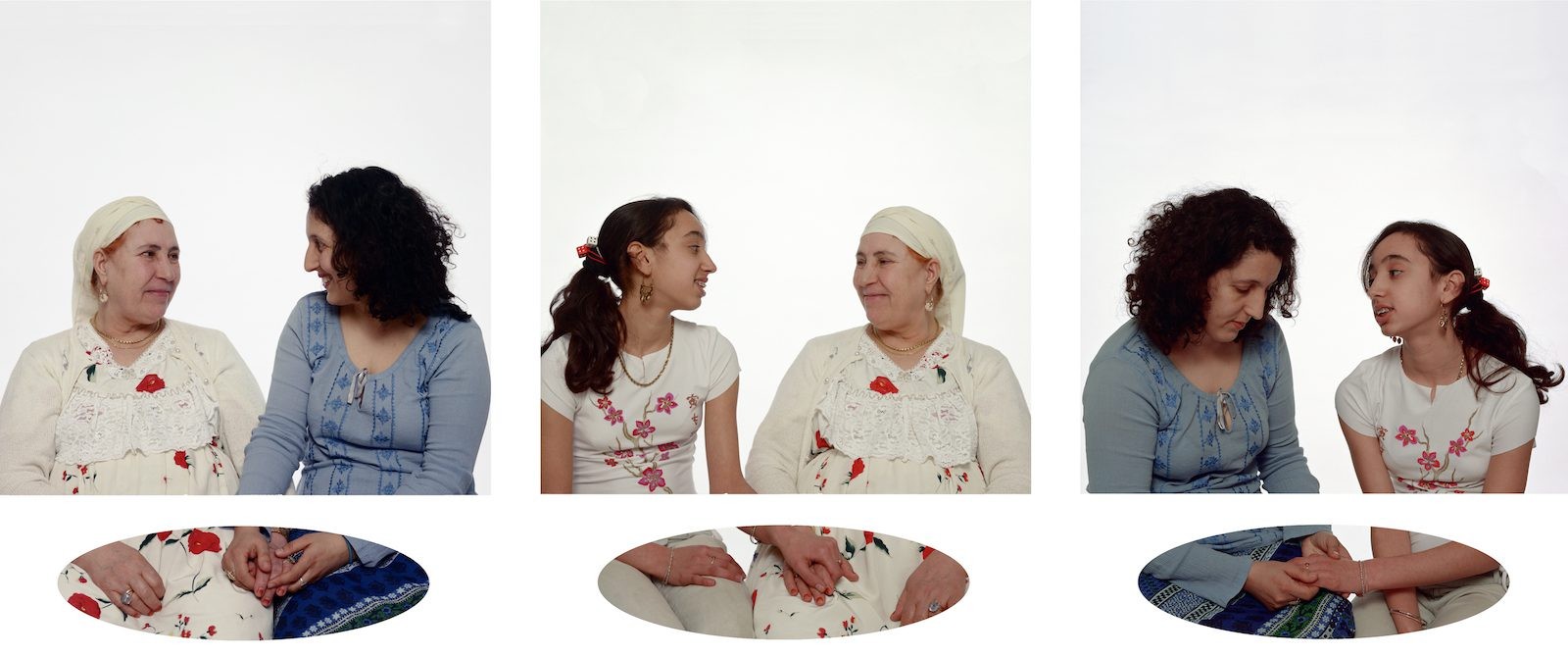
Zineb Sedira, Mother, Daughter and I, 2003© the artist/DACS, London and courtesy kamel mennour, Paris/London
Milliard: This is an interesting shift in your practice. Your early work featured yourself heavily, but always as a witness, or as an interviewer of your family, without any artifice. Here, you’re using yourself almost like you would use an actress. How do you see this transition?
Sedira: Being physically implicated in the project, portraying myself in it, and dressing in the style of the 1930s will allow me to better understand what it meant to take these journeys. It is also a creative and visual choice. I like challenging myself, hence why I’m not doing a film or a traditional photography project. The final piece will be an installation, where photography has a large presence, but there will also be objects and archival material.
Milliard: Your oeuvre starts with self-representation, for example, in your series from 2000, Self Portraits or The Virgin Mary. What was the original impulse to put yourself in front of the camera?
Sedira: The idea of performing. I did a lot of reenactment of rituals, where you might not see me fully, but you’d see my hands, my mouth, or my eyes. That was born from the feminist movement of the 1970s—a reaction to the male gaze on the female body. A strategy for me was to fragment the body. When I became a mother in the early ’90s, I put myself fully in the picture, but my mother and daughter were there, too. It became a family affair.
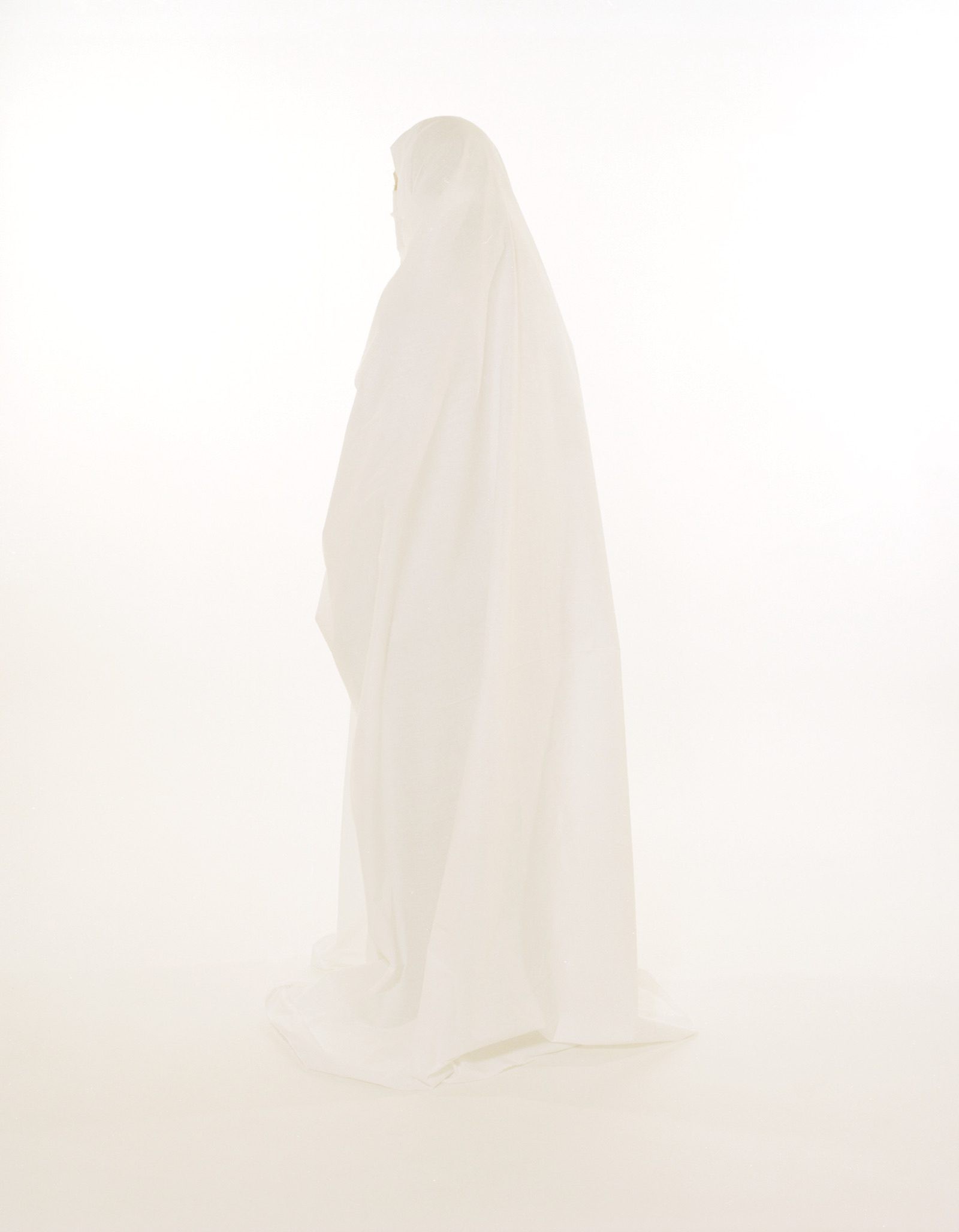
Zineb Sedira, Self Portraits or The Virgin Mary, 2000© the artist/DACS, London and courtesy kamel mennour, Paris/London
Milliard: In 2002, you went back to Algeria for the first time after La décennie noire, or the Dark Decade, years of terrorism that tore the country apart between 1991 and 2002. From then on, you were able to create a new relationship with a country you only knew from your childhood and teenage years. This coincides with a clear shift in your work, which went from a very personal perspective to something which has become much more universal. Is it fair to say that the experience of going back was a trigger for that change?
Sedira: Before 2002, I had been working with oral history and my parents’ stories about Algeria. I was making work based on my memory and what it meant to be Algerian in France, specifically in the suburbs of Paris. In 2002–3, I was invited to the French Institute in Algiers for an exhibition in collaboration with a local gallery, Galerie Esma. I got to spend time in Algiers and totally fell in love with it. Then, in 2006, thanks to a commission from the Photographers’ Gallery and the Film and Video Umbrella in London, another important shift happened: I worked with a film crew and actors for the first time on what was to become my piece Saphir. I moved away from the autobiographical and started working with the landscape of Algeria.

Zineb Sedira, Saphir, 2006. Video installation. Double projection, color, sound © the artist/DACS, London and courtesy kamel mennour, Paris/London
Milliard: Saphir is also remarkable in the way it introduces a very poetic imaginary. More generally, what place do you give to fiction in your work?
Sedira: Fiction is important, but it always starts from the personal. I need to hear or fall in love with a story. The work is often anchored in my French-Algerian-English experience—but when I use fiction the context broadens, it becomes more universal. Opening up my work has been a constant preoccupation. I know Algeria well, and it is now very easy for me to work in Algiers, but for my own development as an artist, I need to explore other contexts. This is why I shot a ship graveyard in Nouadhibou, Mauritania, in 2008. This resulted in the video installation Floating Coffins (2009) and several photographic series (including TheLovers, 2008; The Deathofa Journey, 2008; and MaritimeNonsenseandOtherAquaticTales, 2009).
Milliard: Floating Coffins is also part of a history of shifts. Each big piece that you make brings with it a whole new visual vocabulary. In this piece, there are fourteen screens, exposed cables. You really pushed the installation format. You also pushed the relationship between film and still image.
Sedira: My main medium is film and video, whether HD, 16mm, or more recently 35mm. But photography is always there, especially when traveling to shoot a film. I always come back with a large body of photographs. Photography is also often a medium I can control better than moving image because it’s easier to manage and less costly. Film requires a crew, a sound recorder, an assistant, etc. Photography only requires either one photographer, if the shoot is particularly technical, or simply me behind the camera.

Zineb Sedira, Shattered Carcasses, 2008. Installation of 10 light boxes© the artist / DACS, London and courtesy kamel mennour, Paris/London
Milliard: Nouadhibou is known as one of the places where people leave Africa for Europe. This renders Floating Coffins particularly striking from the perspective of 2017, with the migrant crisis, which over the last few years has become so present in the news. Do you look back on your work? How do the layers of meaning evolve as current affairs change?
Sedira: Clandestine immigration has existed for a long time. In Algeria, we grew up with it. For the last thirty years, many young men in Morocco, Algeria, and Tunisia have been trying to leave for Europe by crossing the Mediterranean. We call them Harraga, those who burn borders. Much of my work has been based on this migration, as well as the immigration of my parents to France by boat in the early ’60s. More recently, we’ve heard lots in the news about immigration because of the crisis in Syria. Was I ahead of my time? No, it is just that immigration was just not portrayed on TV and in the press at the same scale.
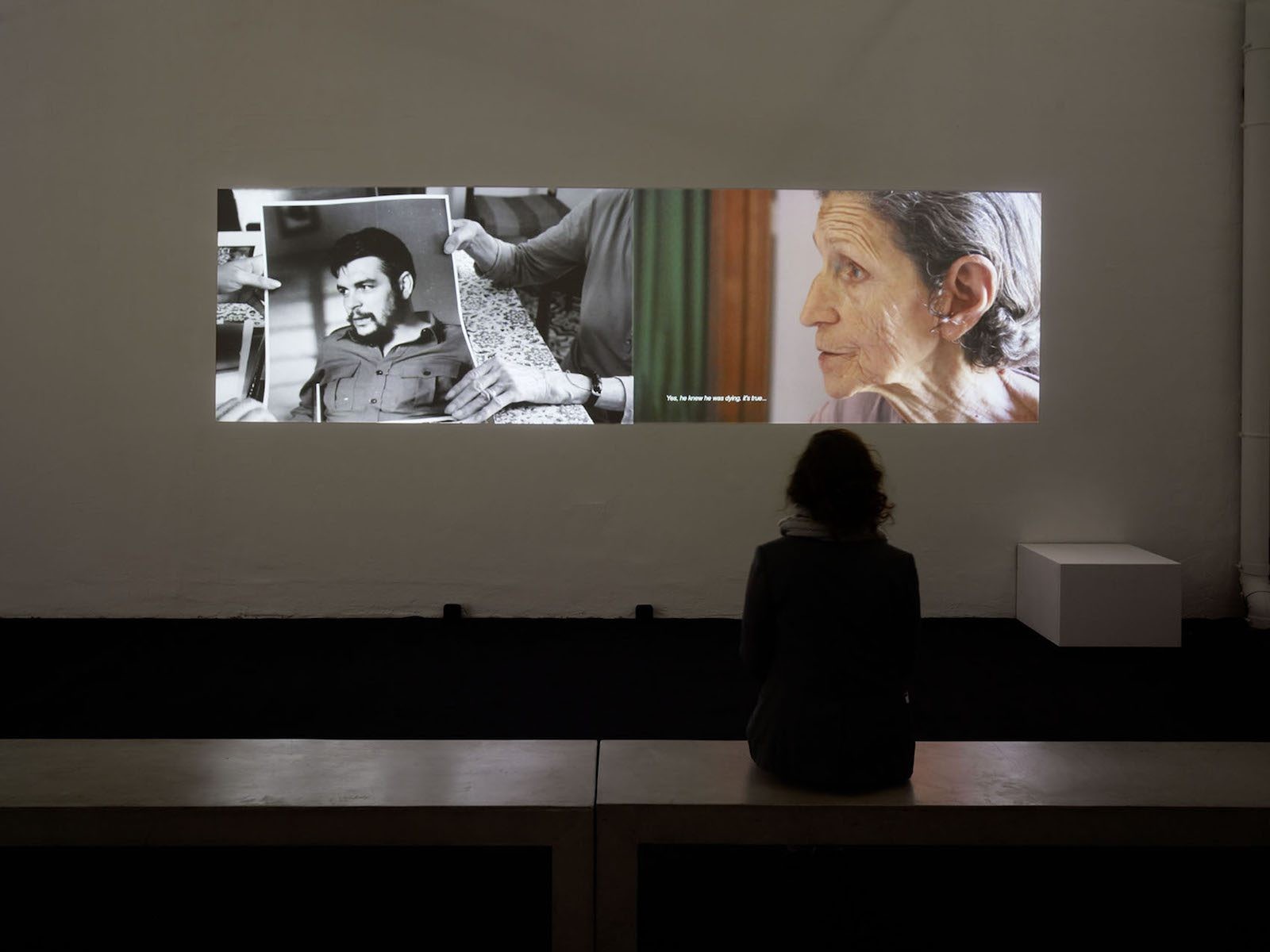
Zineb Sedira, Gardiennes d’images, 2010. Double projection video, installation view © the artist/DACS, London and courtesy kamel mennour, Paris/London
Milliard: In Sharjah, you’ll also show another body of work, which deals with a very topical subject, namely the freedom of press. Laughter in Hell (working title) tackles this theme in the context of terrorism in Algeria in the 1990s, and you’ve chosen to look at it from a very specific angle: caricature and humor. Why this perspective?
Sedira: In 2010, I did a project about the archive of the Algerian photographer Mohammed Kouaci (Gardiennes d’images), which led me to become interested in how art is used as a tool of resistance. But before that, during my many trips to Algeria, I spent time socializing with friends in bars or at dinners and we would always crack jokes. Eighty percent of their jokes were about terrorism in the 1990s. So, following my interest in oral history and art and resistance, I started collecting verbal jokes. But I quickly discovered that you couldn’t look at verbal jokes without exploring caricatures in the Algerian press, which developed rapidly at that time. I believe that this form of humor was developed to combat fear and death by poking fun at the terrorists and at the government. It was a release mechanism, as well as a communication tool to disseminate the political events of the time.

Zineb Sedira, Still from Gardiennes d’images, 2010 © the artist/DACS, London and courtesy kamel mennour, Paris/London
Milliard: The cartoonists were taking huge risks that they might become targets themselves.
Sedira: They were. On October 5, 1988, Algeria saw a revolution similar to the Arab Spring. Youngsters went into the street protesting against social injustice. They were shot brutally by the government of the time. A new government was formed and it authorized a private press. This decision led to the creation of countless newspapers in both Arabic and French, and they were benefiting from a freedom of speech never seen before. Some journalists, but also youngsters who hadn’t been involved in media before, became acute political caricaturists and virulent critics of terrorism. The terrorist motto was, “Those who fight us by the pen will perish by the blade,” so the journalists and caricaturists were directly targeted. Some died, others fled to other countries, mainly France.
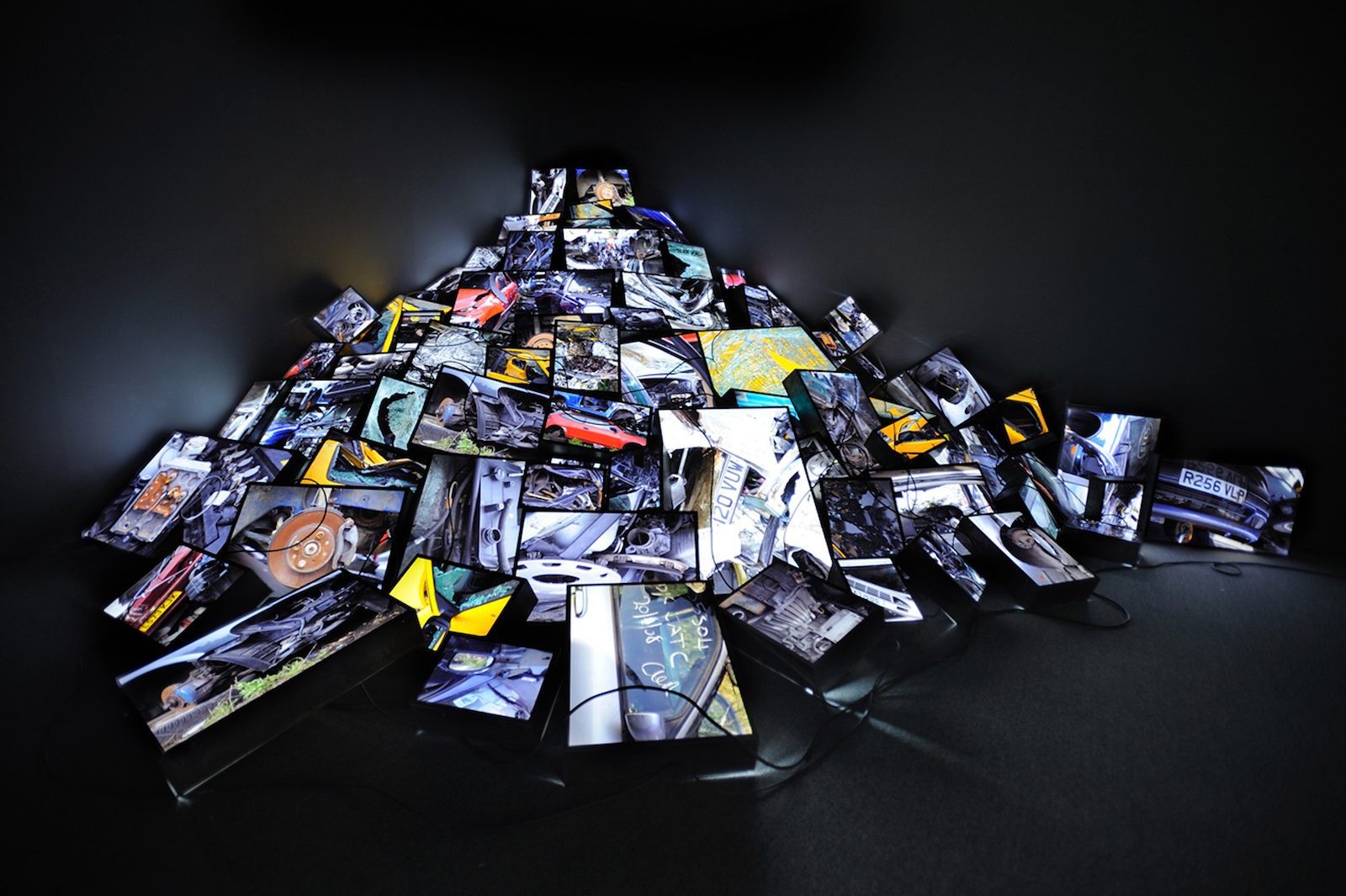
Zined Sedira, Dead End, 2010. Installation. 100 light boxes, electric cables © the artist/DACS, London and courtesy kamel mennour, Paris/London
Milliard: While you were working on this piece, the attack on the French satirical newspaper Charlie Hebdo happened in Paris, on January 7, 2015. Did this have an impact on the way you were looking at your caricature project? Or did that make it more difficult to show?
Sedira: Yes, it was more difficult to show it. The project was meant to be exhibited in Paris in 2015, after almost ten years of research. But in the end, I was told it couldn’t be shown because the Charlie Hebdo events were too fresh and raw and curators were worried about a possible confusion between terrorism and Islam. In Laughterin Hell, I’m just displaying and sharing what happened in Algeria in the 1990s. Much of it was a criticism of terrorism and how the Algerian government dealt with it. Some people thought the Muslim community would be hurt by the project; others were worried about terrorists possibly harming me. Now I’m showing this project at the Sharjah Art Foundation, which financed its production. Sharjah is also fighting terrorism so the project is relevant to their context, too.

Zineb Sedira, Saphir, 2006. Video installation. Double projection, color, sound © the artist/DACS, London and courtesy kamel mennour, Paris/London
Milliard: It’s interesting that you talk about the reaction in France because some of the topics that you’ve dealt with—and in particular the Independence War in Algeria—are very close to the bone there. The country has a particularly difficult relationship to its colonial past, mired in collective amnesia and denial. You’ve confronted it your entire career. Do you think things are changing?
Sedira: Sometimes it feels like we take one step forward, and then two steps back. Since the terrorist attacks in Paris, there has been a regression in the way French Algerian relationships are perceived, especially since some of these attacks were carried out by French Algerians (or French Moroccans). France has no real interest in looking at why this is happening. Why might a French Algerian not see himself as French? The conversations around these issues have been ongoing and are complicated. Until 1999, French history books said that the Algerian War was an “event,” and not a war. It is still believed by a certain political class that colonization was beneficial for Algeria, which is now ungrateful for the advantages it brought. Resentment often results from these types of views, and this creates problems in the French Algerian identities. Obviously, this is not a reason to become a terrorist, but there is still a problem in France with Islam at large, and especially with Algeria because of their shared history.
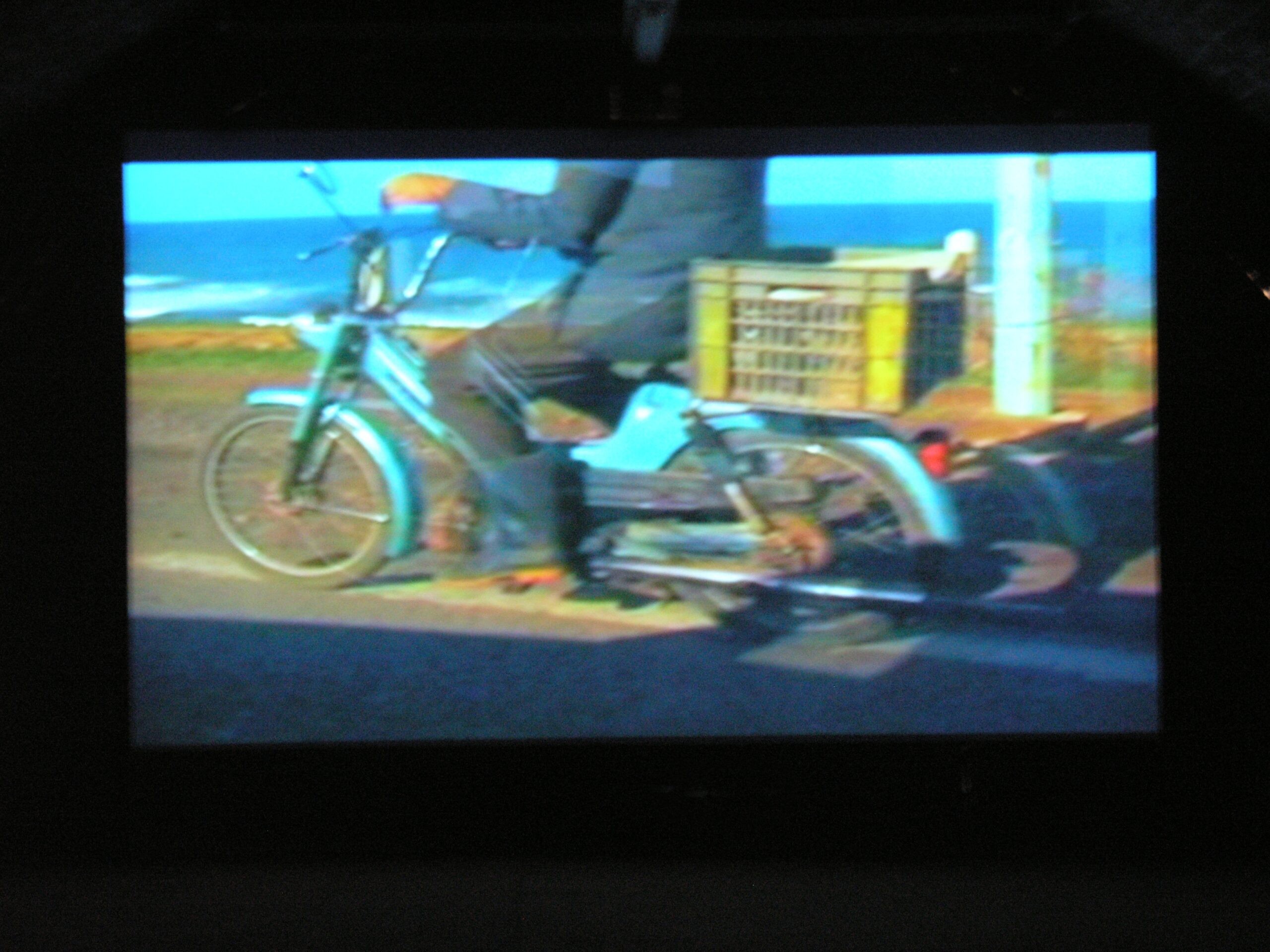
Zineb Sedira, And the road goes on…, 2005. Video projection, 8 minutes, 8 seconds, color, sound © the artist / DACS, London and courtesy kamel mennour, Paris/London
Milliard: In 2011, you started aria, or Artist Residency in Algeria. This formalized something that you were already doing: inviting artists to spend time in Algiers to make work and meet people. Why was it important for you to become an actor in the Algerian art scene?
Sedira: Many people want to visit Algeria because they’ve heard of its colonial history, its architecture, its wealth in Roman ruins … but they don’t dare to go. When I had access to a flat in 2005, I was able to invite people: artists, friends, art critics, academics. I realized there was a considerable demand, especially from artists who wanted to make work about post-colonial Algeria. In Algiers, at the art school, students have few opportunities to explore “non-conventional mediums,” such as photo and video, or to exhibit, or to meet other artists when they leave school. In 2005, when I got to know the art scene, all I heard from artists was: “We want to meet other artists.” Aria was my response: I invited international artists—Alfredo Jaar, Kapwani Kiwanga, Kader Benchama among others—to come to Algiers to develop their research. And when they were in town, I asked them to meet local artists, and either to give a talk, or to lead a workshop, or to look at portfolios. That was my way of addressing the needs of both international and local artists, and, at the same time, putting them in conversation.
Coline Milliard is a writer and editor based in London.
This article is part of a series produced in collaboration with Aperture magazine, coinciding with Aperture’s summer 2017 issue, “ Platform Africa.”
Read more from
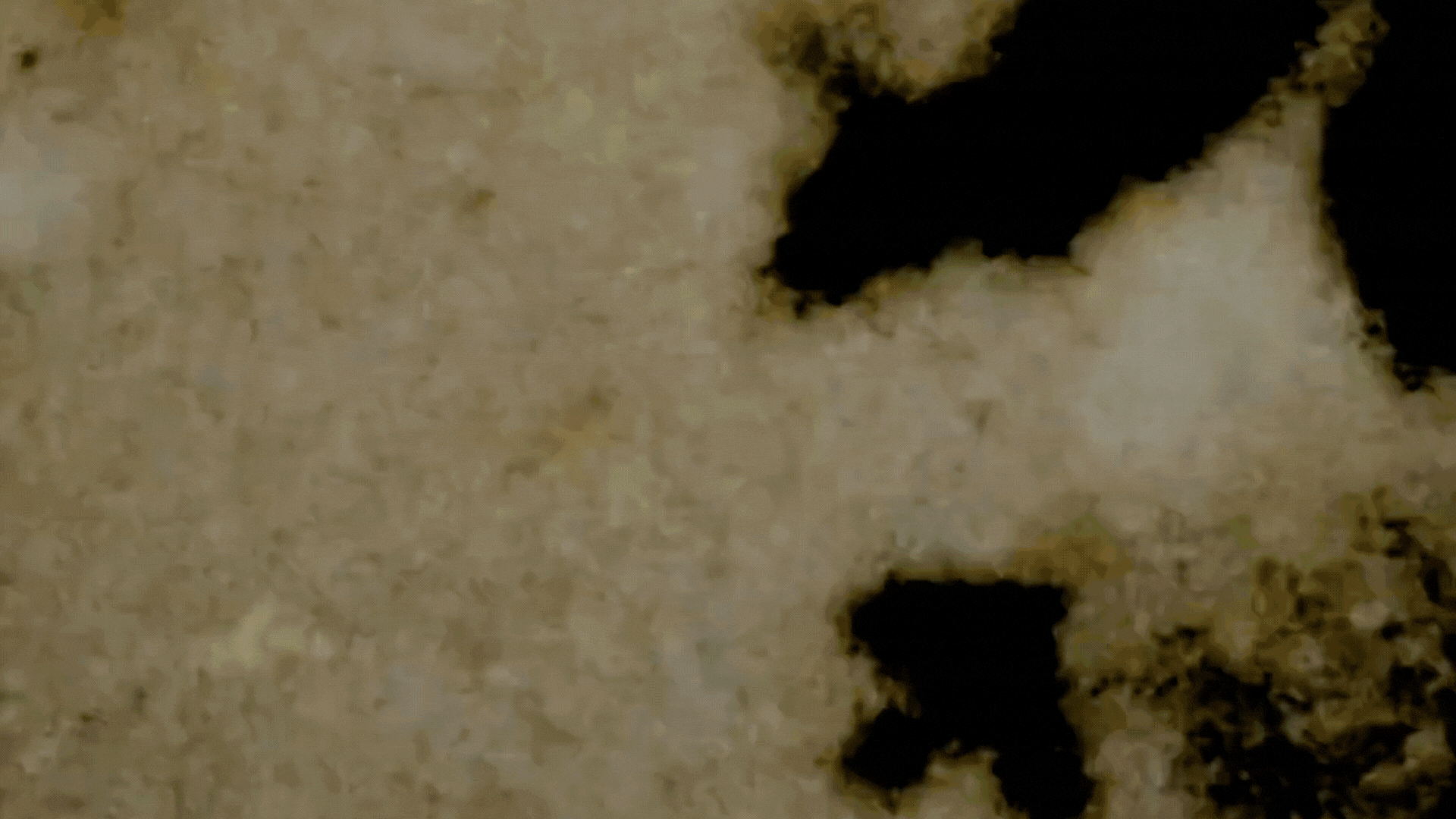
On Ghosts and The Moving Image: Edward George’s Black Atlas

Confronting the Absence of Latin America in Conversations on African Diasporic Art

On Exile, Amulets and Circadian Rhythms: Practising Data Healing across Timezones
Read more from
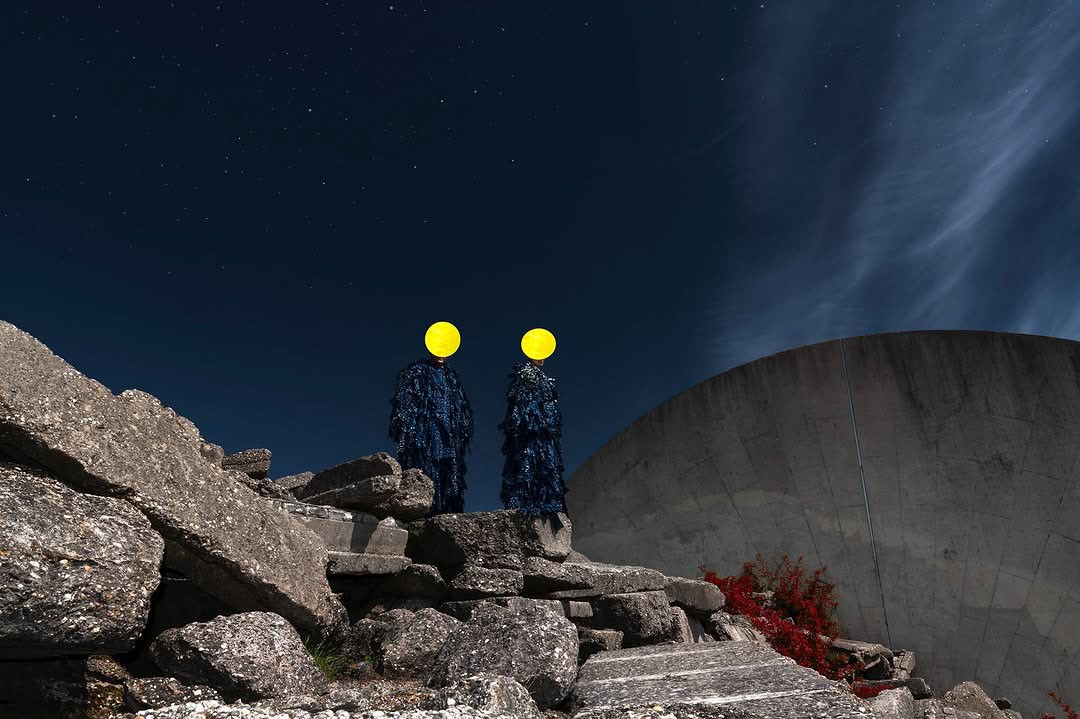
Electric Dub Station: The Return of Tomorrow
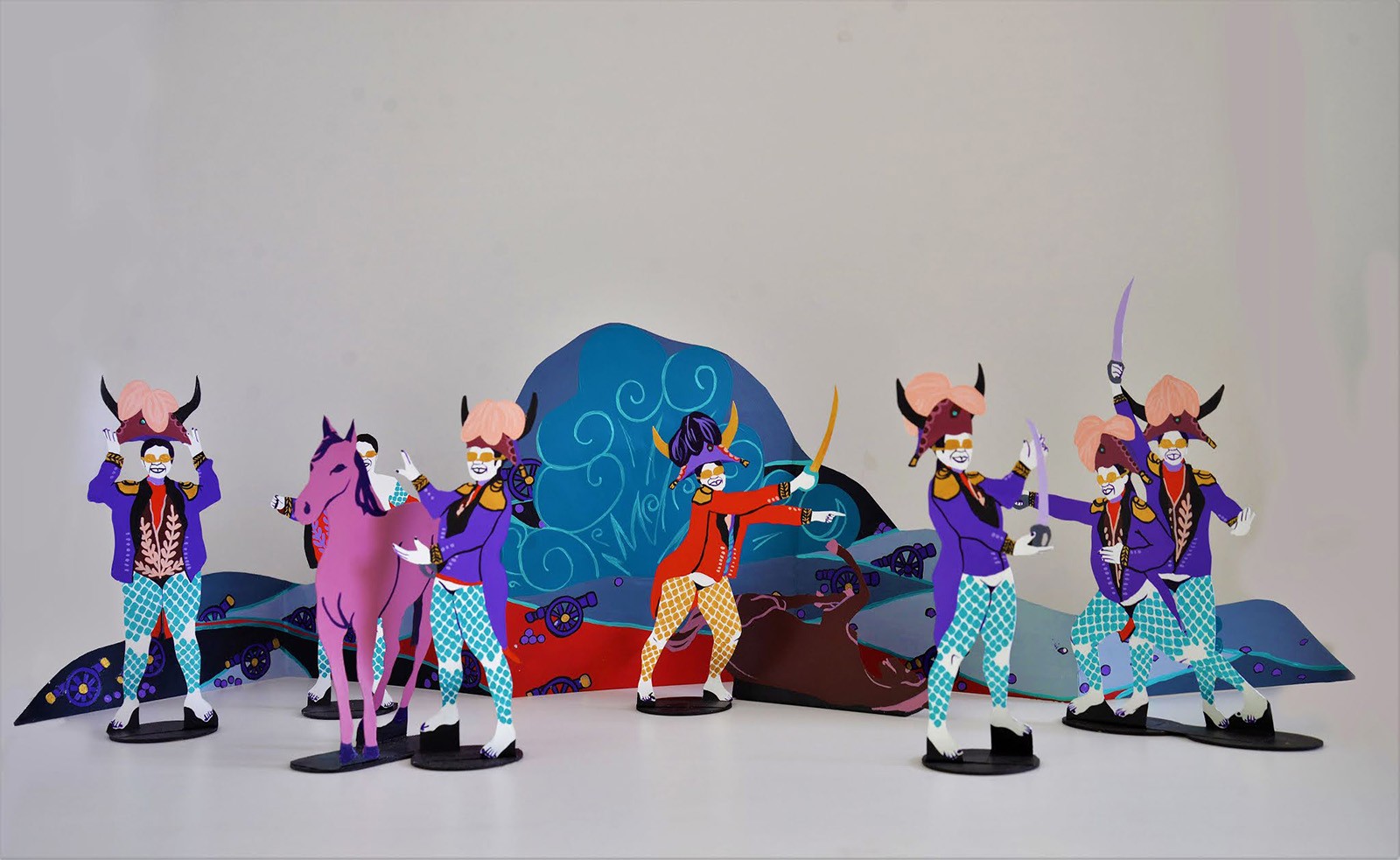
Tessa Mars Links the Migratory Experience to Haitian Spirituality
